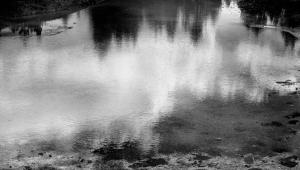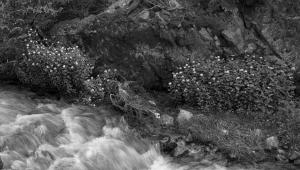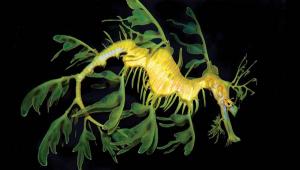Exposure Tips
Exposure Tips
Outdoor Fill Flash/Exposure Compensation Combo
by George Schaub
When working outdoors think of your built-in flash or auxiliary speedlight as a secondary light source that can be used to supplement, but not overpower the essential light source, the sun. Use that secondary source as a way to highlight certain subjects or reveal shadow areas that might otherwise be too dark. The main consideration is to use the flash so that it does not make the photo look untrue, or so overexposed (in relation to the main light) that it is apparent that a flash was used.
One of the ways to do this is to work with ambient light and flash exposure compensation, and to play with the two to gain just the balance and effect you want. The two outdoor scenes here illustrate the flash/compensation technique.
 |
|
|
This entire scene was in shadow. I knew I wanted to have the slow shutter speed effect on the waterfall so I set the Nikon D700 to Shutter-Priority Exposure mode at a shutter speed of 1⁄8 sec. I made a test shot to ensure the flow depiction was good. Because the scene was in shadow the Matrix exposure system overcompensated a bit and made it too light. I wanted a deeper shadow effect so I compensated -1 EV on the exposure. I then mounted a Nikon SB900 Speedlight on the camera and in iTTL mode made a test shot. This added a nice sparkle to the wet rocks but overexposed the foreground rock a bit, so I cut back to -2/3 EV on the flash exposure compensation.
 |
When working with close-ups that have fine detail you have to be especially aware of the flash overexposing the foreground subject. That’s when using minus flash exposure compensation (which essentially lessens the flash output in partial or full EV steps) comes in handy. In this shot I wanted the background to go quite dark, eliminating detail but maintaining the highlight catch on the flowing water. I set the camera to Shutter-Priority Exposure mode and a 1⁄8 sec exposure. I did a test shot and arrived at a -2 EV ambient light setting. To illuminate the foreground I did a fill flash exposure test and found that, likewise, a -2 EV flash exposure compensation would do the trick. I switched to a shady white balance to make the light on the flower appear as if I had caught a shaft of sunlight hitting the foreground.
- Log in or register to post comments












































